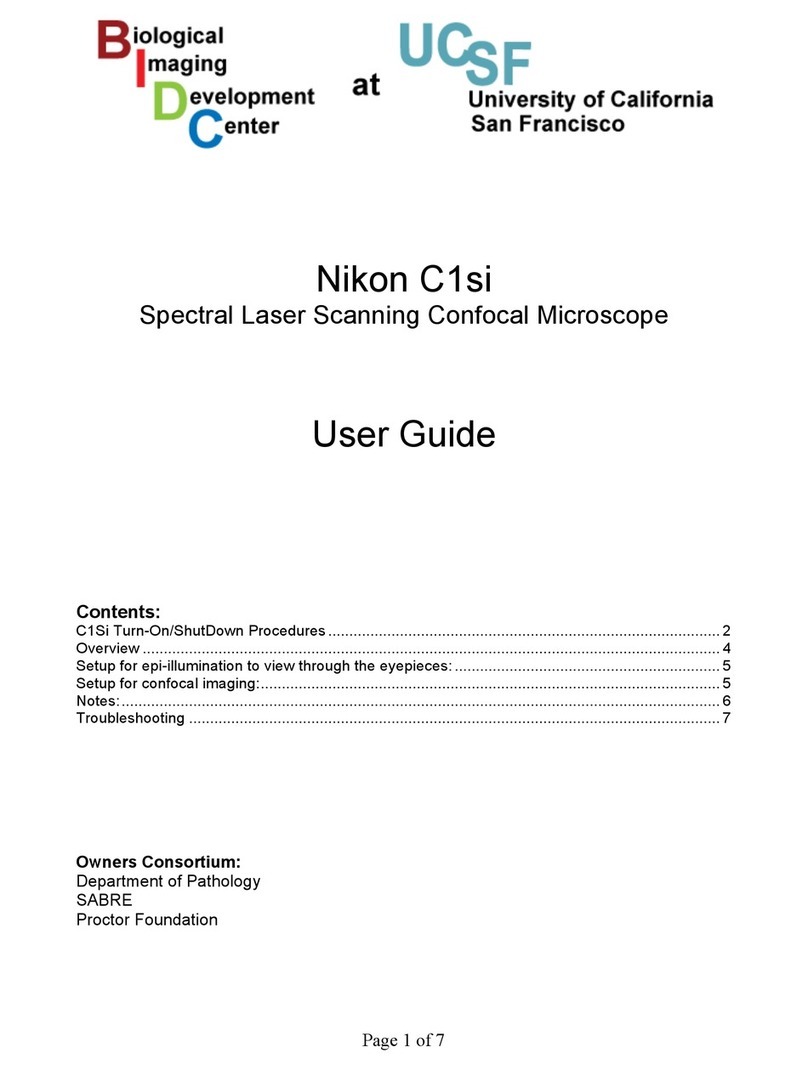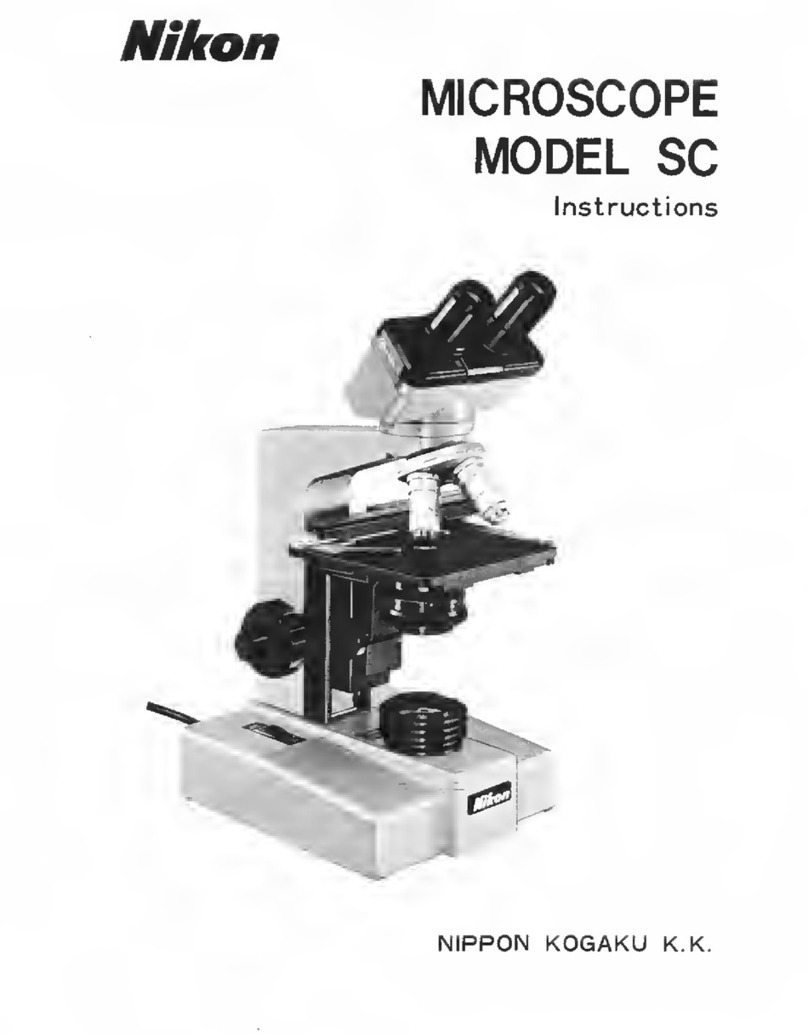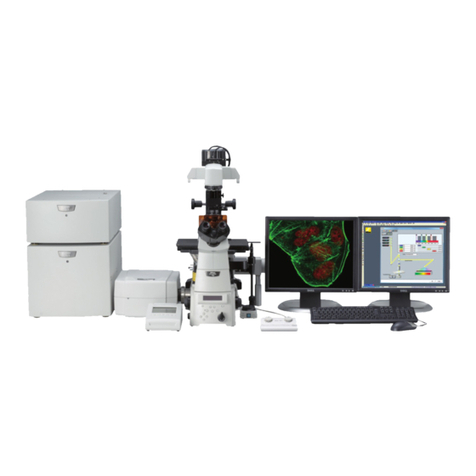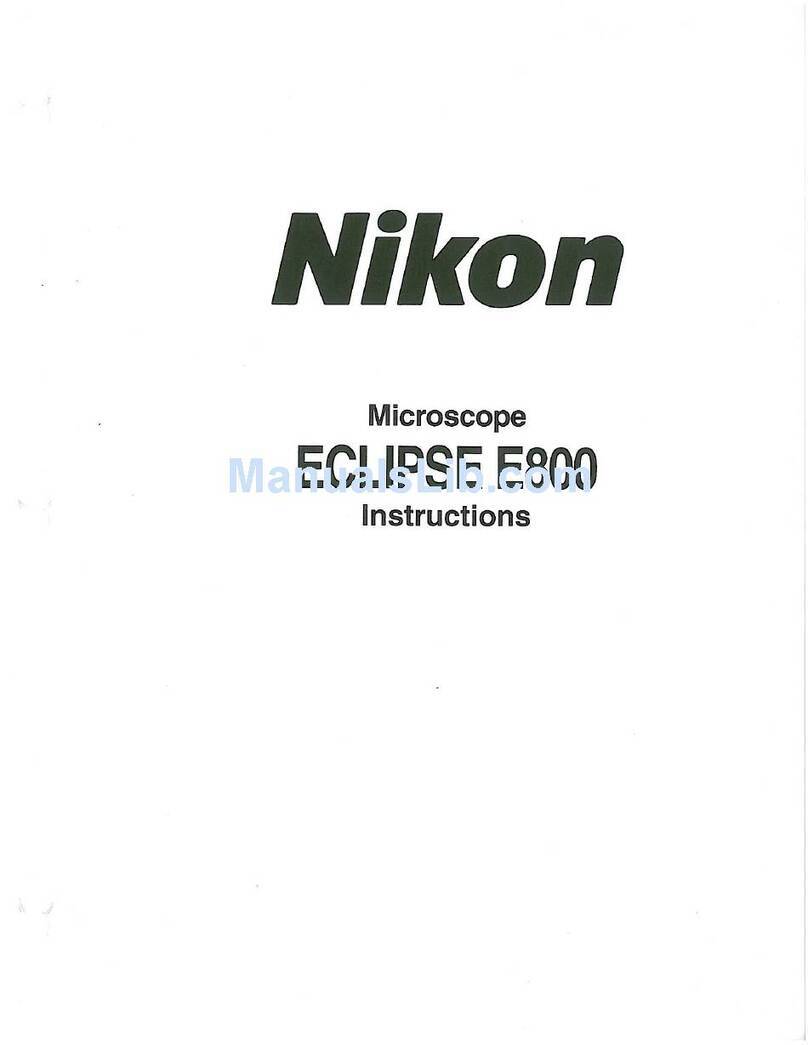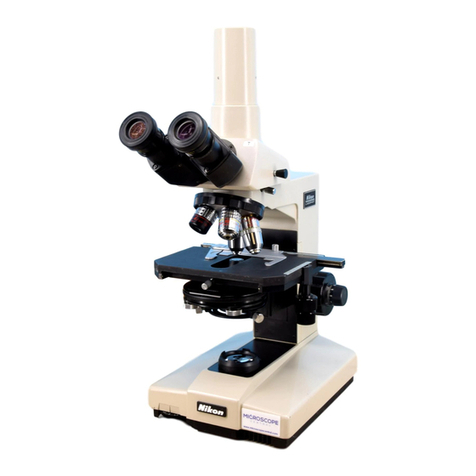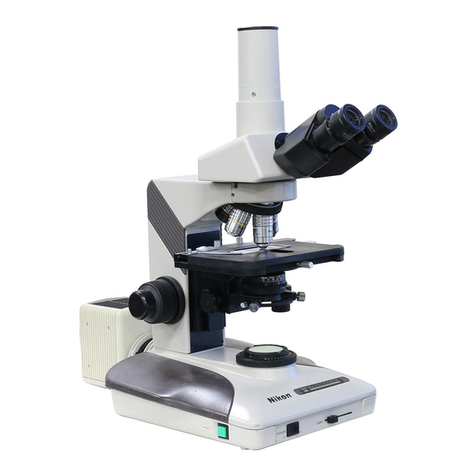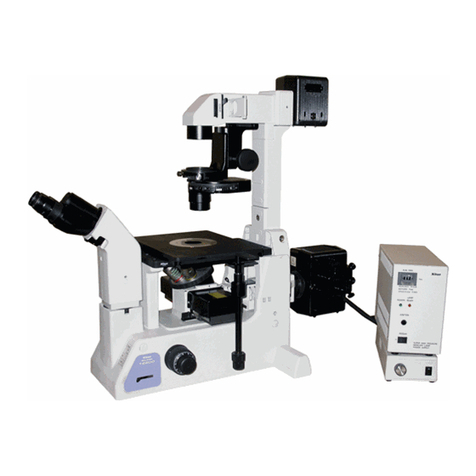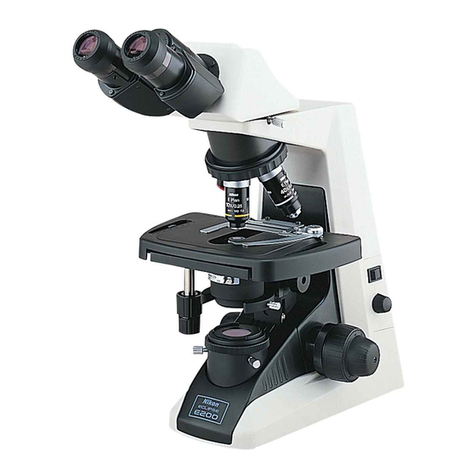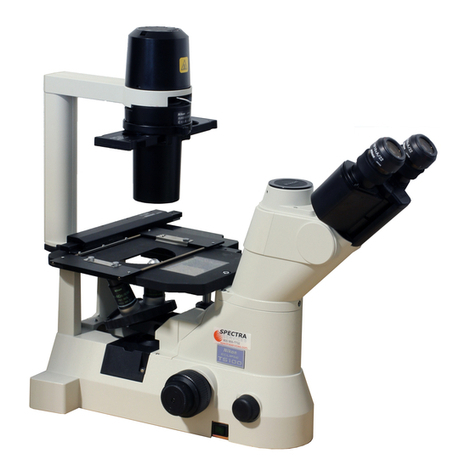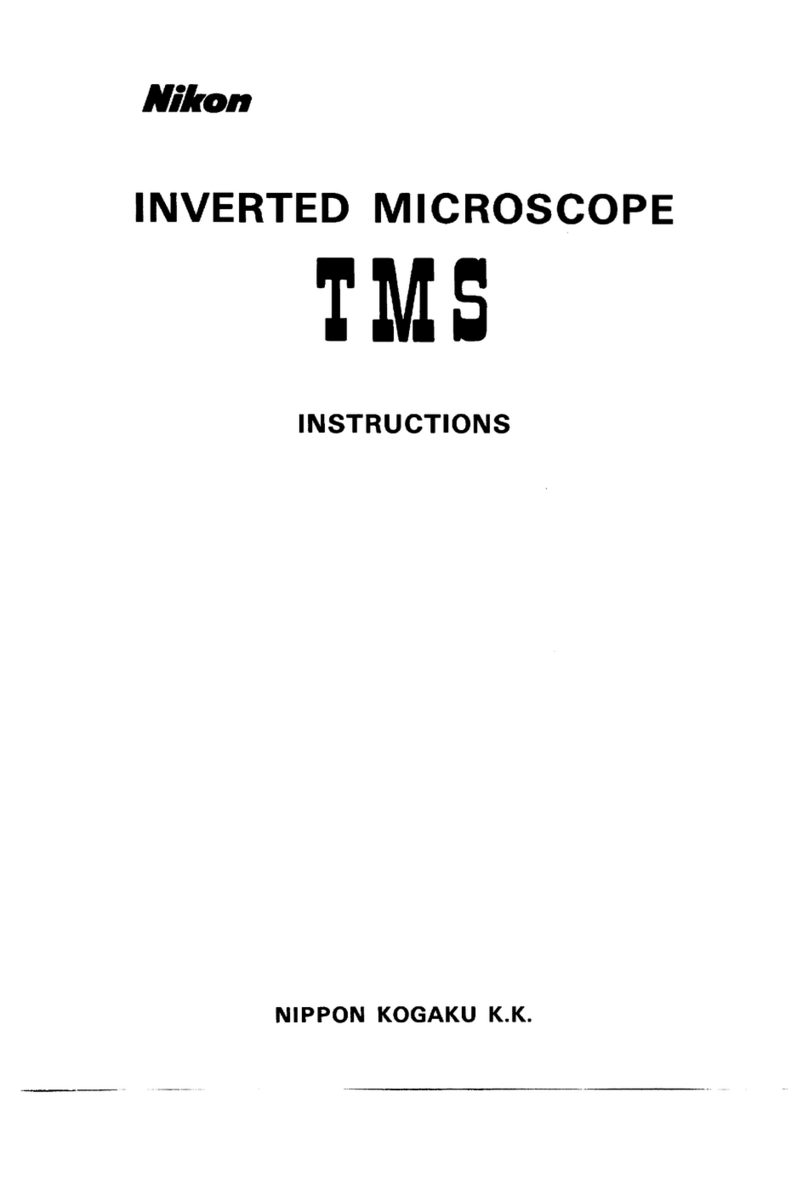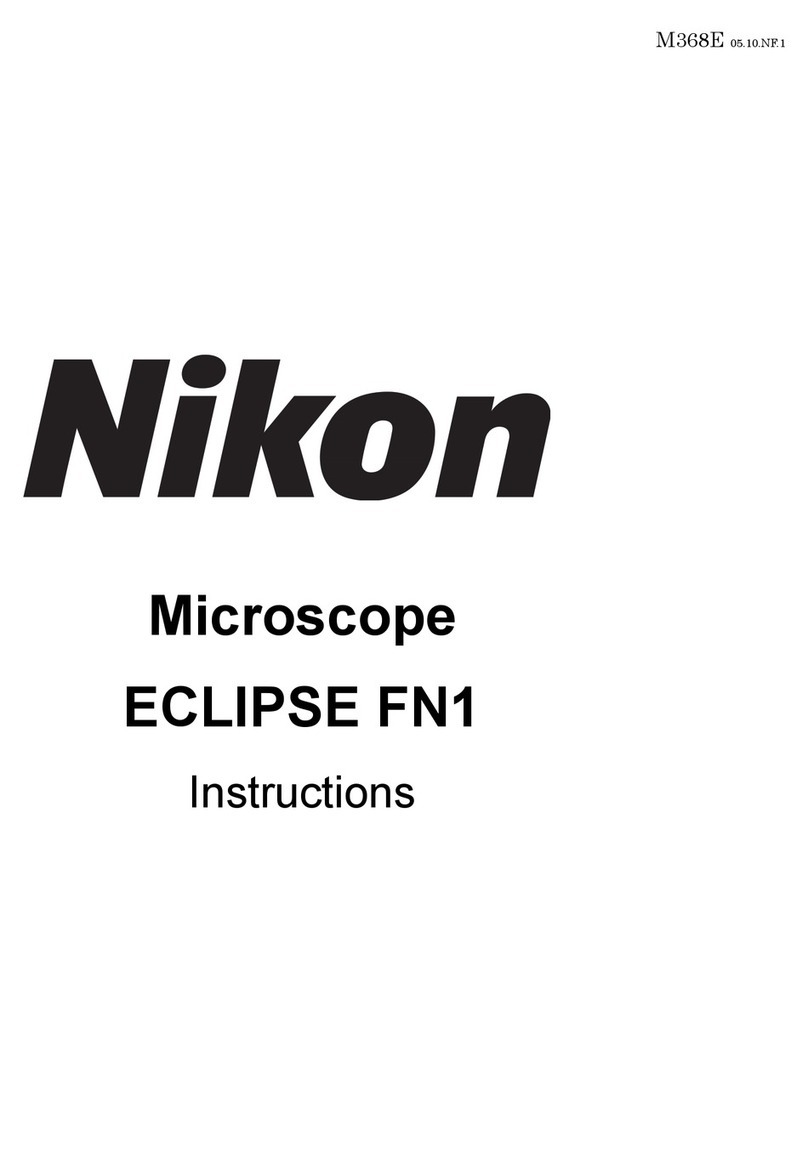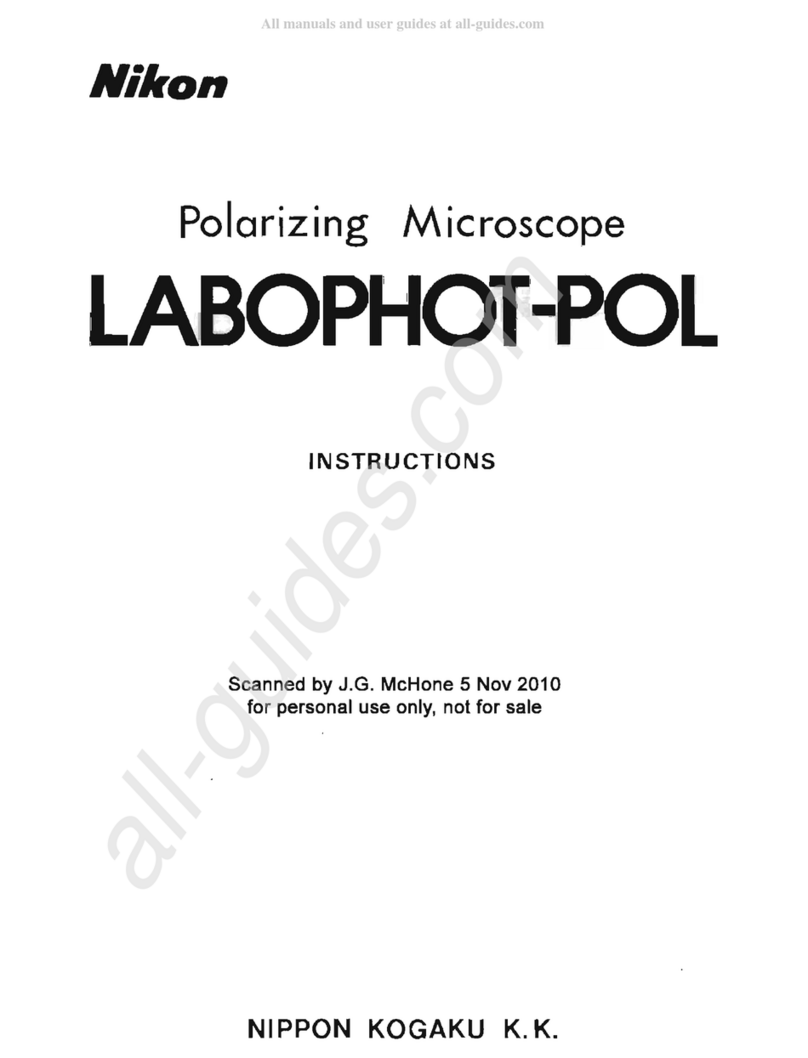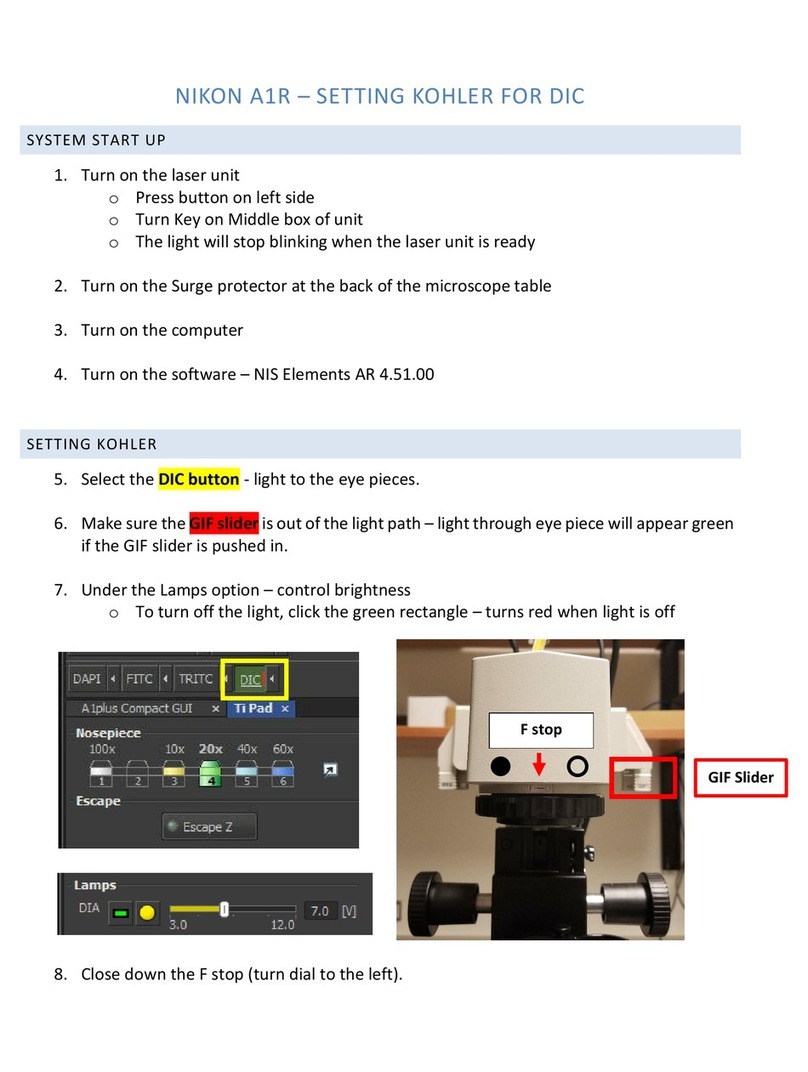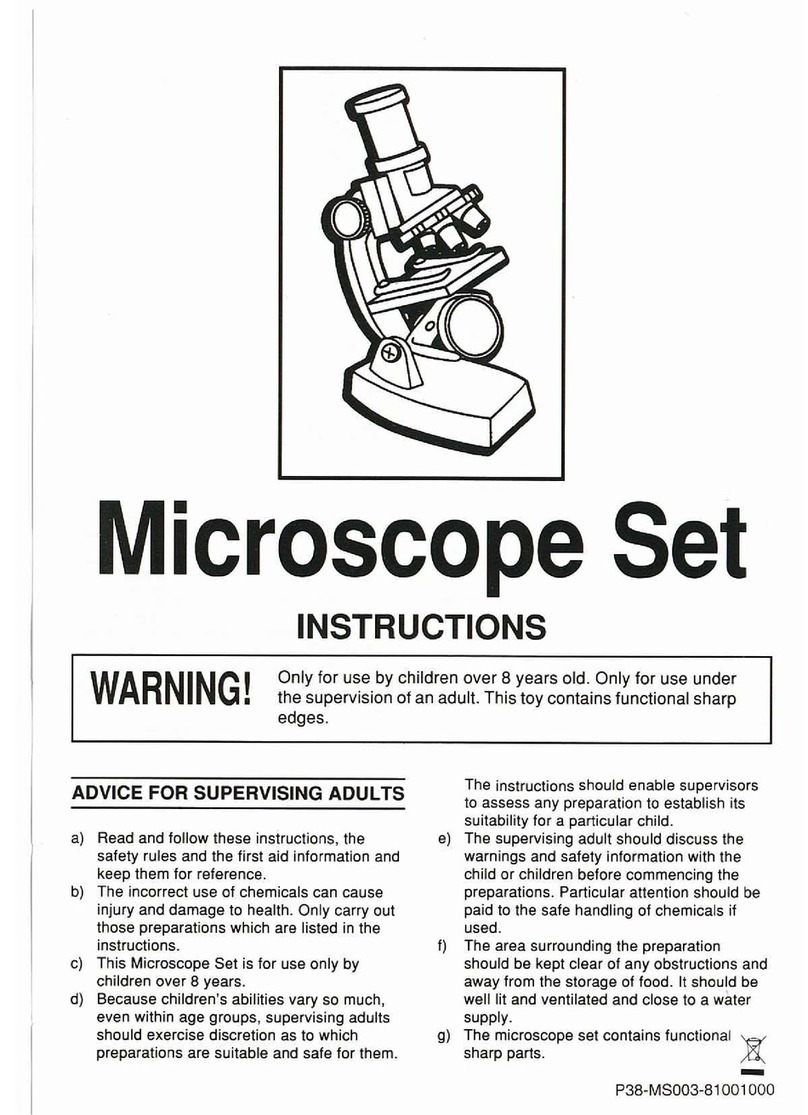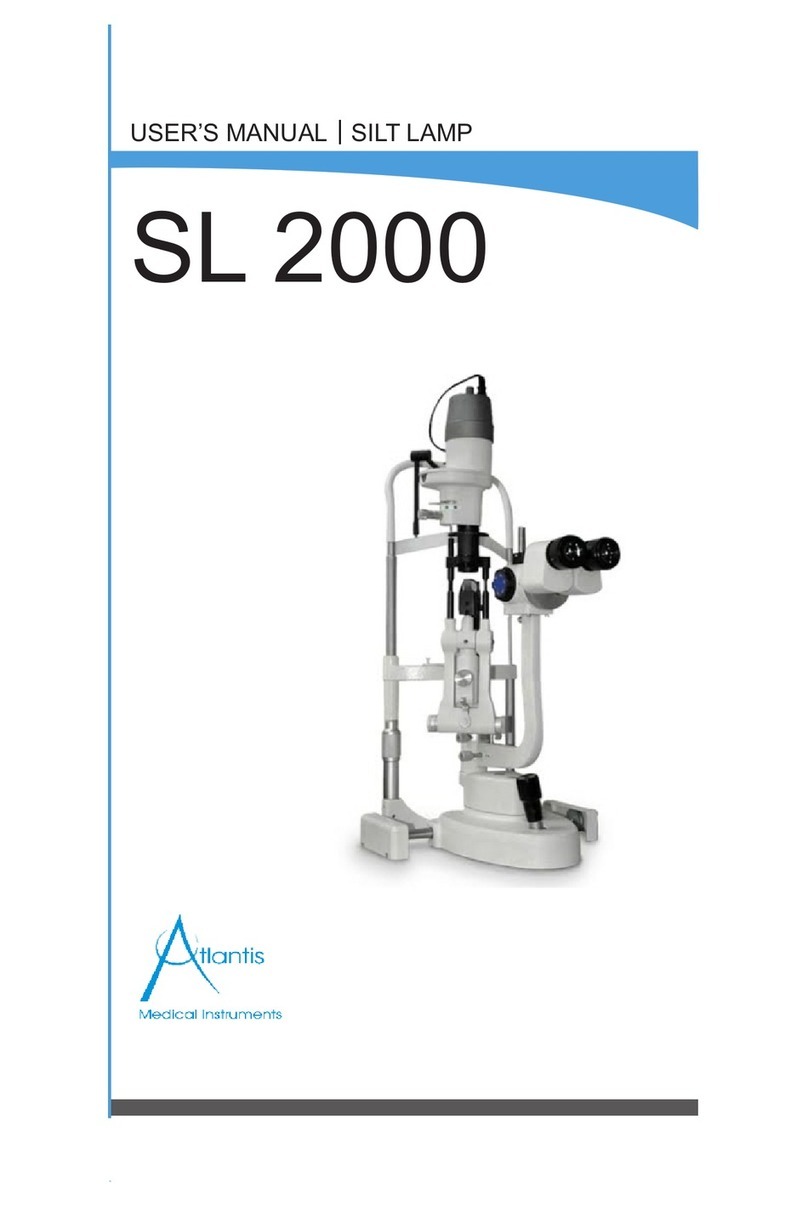Safety Precautions
v
Symbols on the Product
The symbols on the product indicate the need for caution at all times during use. Before operating a part
labeled with the following symbols, refer to the instruction manual and read the relevant instructions.
Symbol Meaning
Biohazard
This symbol can be found on the microscope body, and cautions the following:
•WARNING: The product may become biohazardous if a specimen is spilled onto the
product.
•To avoid exposure to biohazard, do not touch contaminated parts with your bare hands.
•Decontaminate the contaminated parts according to the standard procedures for your
facility.
CAUTION and CAUTION: HOT (for E200 MV series only)
This symbol can be found on the field lens unit (the lamp is set underneath the field lens unit),
and cautions the following:
•The lamp and its surrounding areas (including the field lens unit, field diaphragm centering
screws, and bottom of the microscope unit) will be extremely hot while and immediately
after using the lamp.
•To avoid the risk of burns, do not touch the lamp and its surrounding areas while or
immediately after using the lamp.
•When replacing the lamp, wait approximately 30 minutes after turning off the lamp, and
make sure that the lamp and its surrounding areas have cooled sufficiently before working.
•When replacing the lamp, see “WARNING: 5. Cautions on lamp replacement (for E200 MV
series only)” on P. vi to follow what is described there.
CAUTION: HOT (for E200 MV series only)
This symbol can be found when the field lens unit is removed from the microscope body, and
cautions the following:
•To avoid the risk of burns, do not touch the lamp and its surrounding areas immediately
after using the lamp.
•When replacing the lamp, wait approximately 30 minutes after turning off the lamp, and
make sure that the lamp and its surrounding areas have cooled sufficiently before working.
•When replacing the lamp, see “WARNING: 5. Cautions on lamp replacement (for E200 MV
series only)” on P. vi to follow what is described there.
CAUTION (for E200LED MV series only)
This symbol can be found on the field lens unit (the LED is set underneath the field lens unit),
and cautions the following:
•Make sure that the field lens unit is securely attached.
•Illuminating the LED with the field lens unit removed, a light of high intensity gets in your
eyes and causes an irritating discomfort in your eyes, resulting in a harmful effect on the
microscopy for a while.
•A light leak may lead to inability of observation when the filed lens unit is left removed.
